These are top 10 stocks traded on the Robinhood UK platform in July
Introduction & Market Context
Artivion Inc. (NYSE:AORT) presented its first quarter 2025 earnings results on May 5, 2025, highlighting a 4% year-over-year revenue growth in constant currency despite ongoing recovery from a November 2024 cybersecurity incident. The cardiac and vascular device manufacturer reported progress in clearing backlogs created by the incident, with recovery proceeding faster than initially expected.
The company’s stock closed at $23.33 on the day of the presentation, up 1.89% from the previous close, but still below its 52-week high of $32.33, reflecting continued market caution following the cybersecurity disruption that impacted Q4 2024 results.
Quarterly Performance Highlights
Artivion reported Q1 2025 revenue of $99.0 million, representing a 4% increase in constant currency compared to Q1 2024. Adjusted EBITDA reached $17.5 million, a modest 1.4% year-over-year improvement, while non-GAAP diluted earnings per share remained flat at $0.06.
As shown in the following financial highlights chart, GAAP results were mixed, with the company posting a small net loss of $0.5 million compared to a $7.5 million profit in the year-ago period:
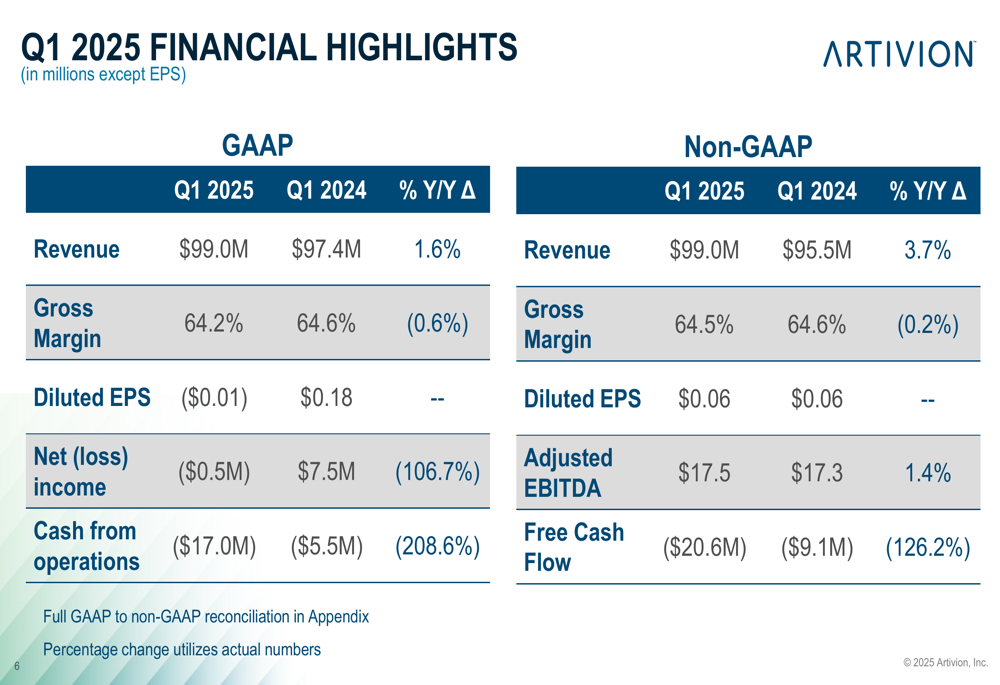
The company’s GAAP gross margin decreased slightly to 64.2% from 64.6% in Q1 2024, while non-GAAP gross margin showed a similar minor decline to 64.5%. Cash flow from operations was negative at $17.0 million, compared to negative $5.5 million in the prior year period, with free cash flow declining to negative $20.6 million from negative $9.1 million. However, management reiterated expectations to be free cash flow positive for the full year 2025.
Product and Geographic Performance
Artivion’s product portfolio showed strong performance across most categories, with aortic stent grafts leading the way at 19% constant currency growth. The company’s On-X mechanical heart valves and surgical sealants also performed well, growing at 11% and 9% respectively in constant currency.
The following chart illustrates the product revenue growth breakdown:
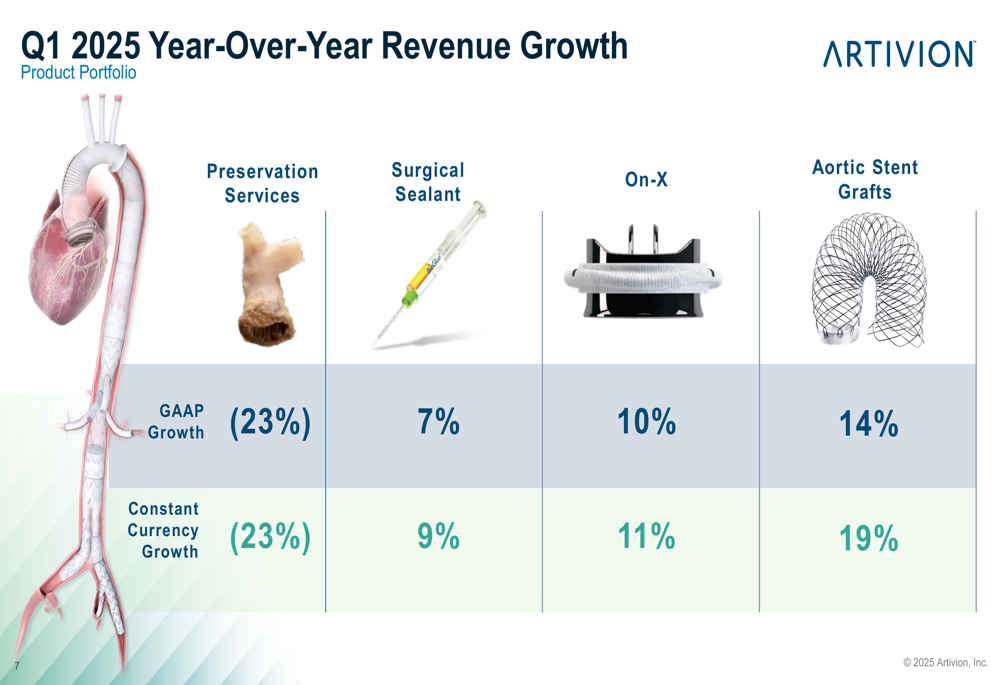
This growth was partially offset by a significant 23% decline in preservation services, which continues to be impacted by the November 2024 cybersecurity incident. Management reported that the tissue processing backlog is approximately 30% cleared and is expected to be fully resolved by the end of Q3 2025, while On-X supply has fully returned to normal levels.
Geographically, international markets drove Artivion’s growth, with Latin America leading at 26% constant currency growth, followed by EMEA (Europe, Middle East, and Africa) at 14% and Asia-Pacific at 8%. North America continued to face challenges, declining 6% year-over-year:
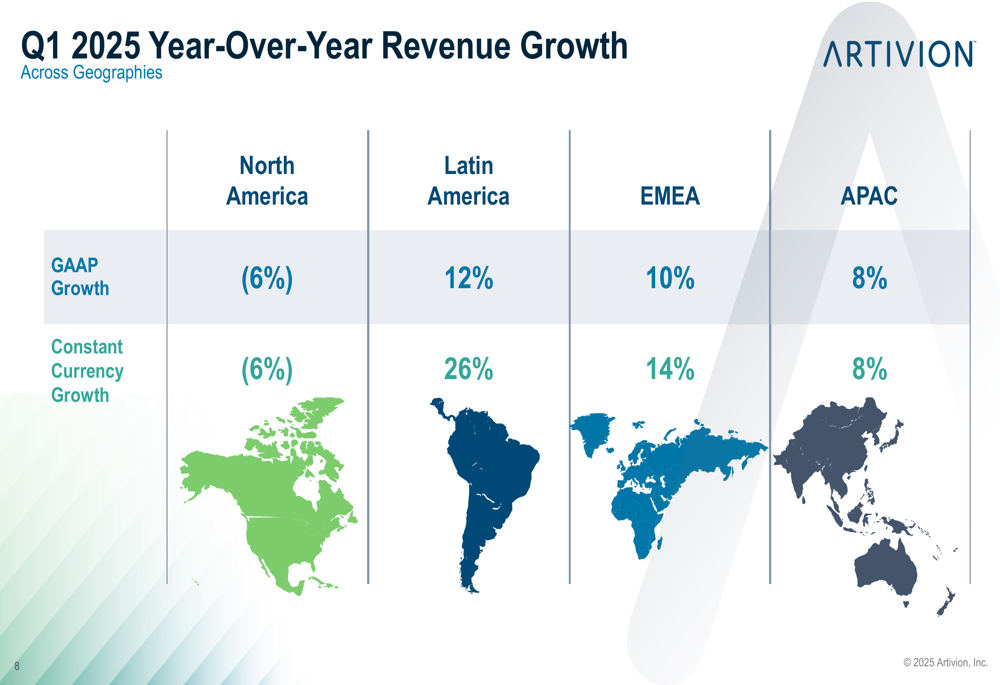
This geographic performance pattern continues a trend seen in Q4 2024, when Latin America and Asia-Pacific were also growth leaders for the company.
Clinical Trial Updates
A significant portion of Artivion’s presentation focused on recent clinical trial successes that position the company for future growth. The NEXUS TRIOMPHE US IDE trial for the Endospan NEXUS device showed promising results for treating aortic arch disease:

The trial demonstrated a 63% reduction in major adverse events compared to the reference performance goal, with particularly favorable stroke and renal failure rates. The company expects to file for PMA approval after completion of one-year follow-up, with potential approval in the second half of 2026.
Similarly, the AMDS PERSEVERE US IDE study showed positive results for the treatment of acute type I aortic dissections:
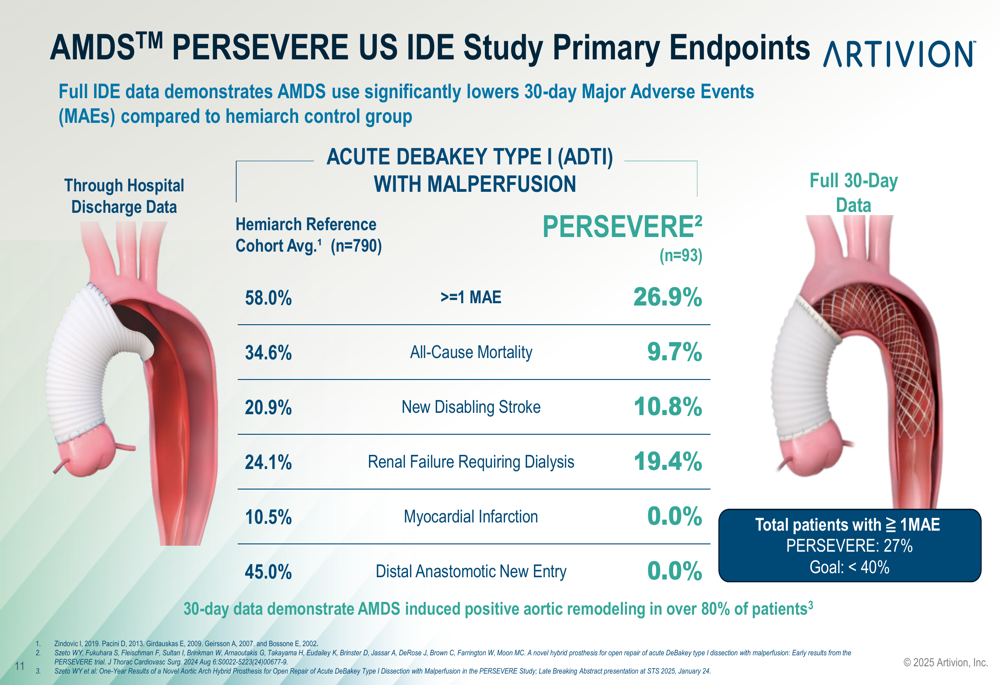
The data showed significantly lower 30-day major adverse events compared to a hemiarch control group, including reduced all-cause mortality (9.7% vs. 34.6%) and elimination of distal anastomotic new entry (0% vs. 45%). Artivion has submitted three of four required PMA modules and expects approval by mid-2026.
Strategic Positioning
Artivion highlighted its strategic positioning of the On-X mechanical valve for younger aortic valve replacement patients, supported by clinical evidence showing advantages over both transcatheter aortic valve replacement (TAVR) and bioprosthetic valves in younger patients:
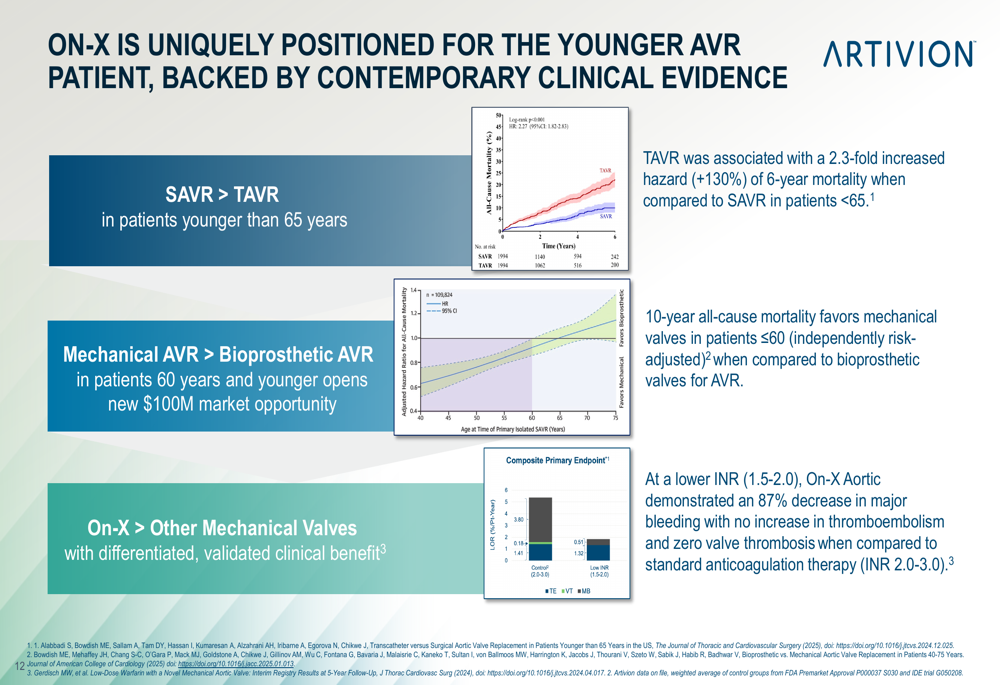
The data presented suggests that surgical aortic valve replacement (SAVR) with the On-X valve offers superior outcomes for patients under 65 years compared to TAVR, and mechanical valves outperform bioprosthetic valves in patients 60 years and younger. This positioning opens what the company describes as a "$100M market opportunity."
Full Year 2025 Guidance
Based on the Q1 performance and ongoing recovery from the cybersecurity incident, Artivion raised the midpoint of its full-year 2025 revenue guidance:

The company now expects revenue between $423 million and $435 million, representing 11-14% year-over-year growth in constant currency. This is a slight increase from the initial guidance of $420-435 million.
For adjusted EBITDA, Artivion maintained its previous guidance of $84-91 million, projecting 18-28% growth over 2024:
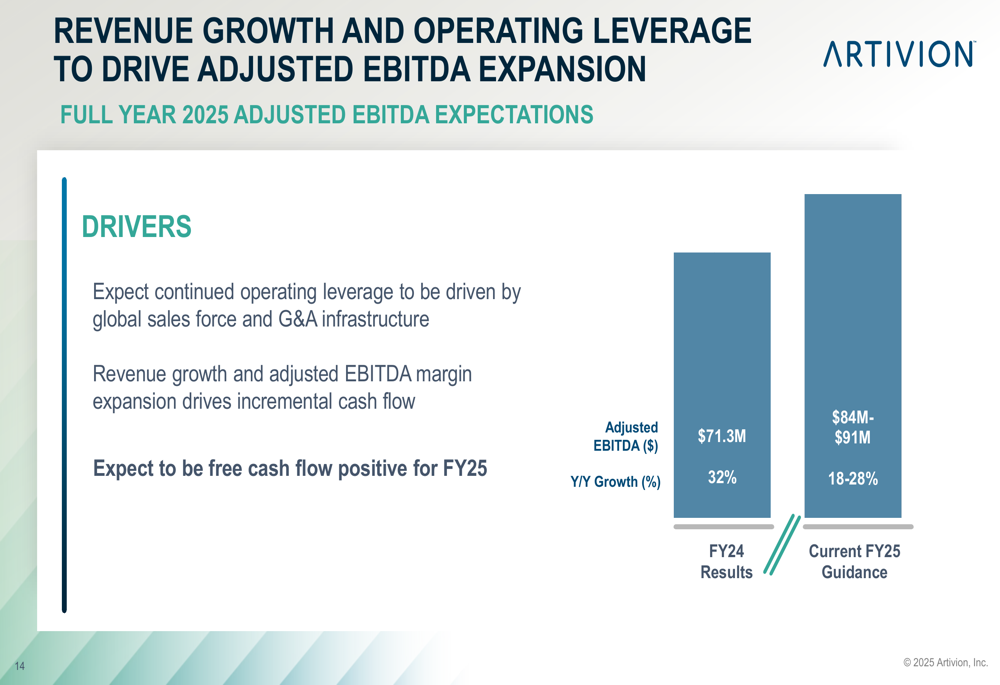
Management expects continued operating leverage to drive EBITDA margin expansion, with revenue growth and improved margins generating incremental cash flow. The company reaffirmed its expectation to be free cash flow positive for the full year 2025.
Forward-Looking Statements
Artivion’s presentation emphasized several growth drivers for 2025, including continued strength in existing products (particularly On-X and aortic stents), positive new clinical data, and the anticipated launch of AMDS following receipt of Humanitarian Device Exemption by the FDA.
The company’s recovery from the November 2024 cybersecurity incident appears to be progressing faster than initially expected, with On-X supply fully normalized and tissue processing backlog clearance ahead of schedule. Management expects the incident’s impact to be largely resolved by Q3 2025, positioning the company for stronger performance in the second half of the year.
With promising clinical trial results for both NEXUS and AMDS, Artivion is laying groundwork for potential new product approvals in 2026 that could drive longer-term growth beyond the current fiscal year.
Full presentation:
This article was generated with the support of AI and reviewed by an editor. For more information see our T&C.
